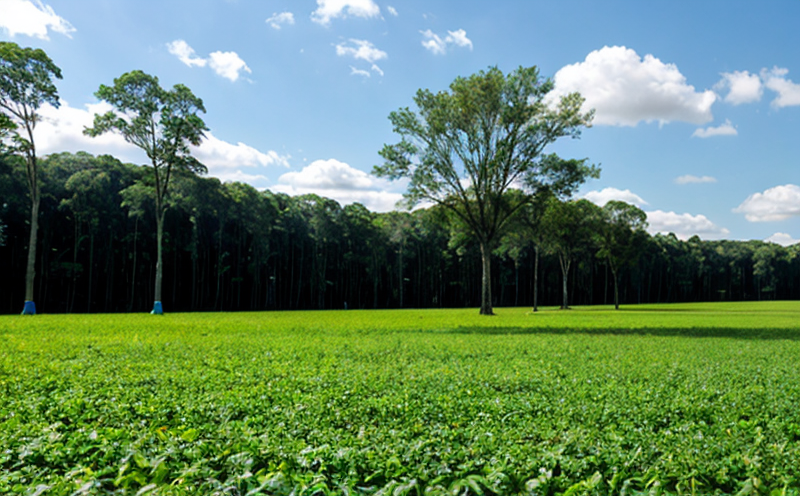Aquatic Toxicity Testing of Detergents
In today's consumer products market, ensuring the safety and environmental friendliness of detergents is paramount. Aquatic toxicity testing plays a crucial role in evaluating the potential harm that detergent formulations can cause to aquatic ecosystems. This service involves assessing how different ingredients interact with water and marine life, thereby providing manufacturers with vital insights into their product's environmental impact.
For quality managers and compliance officers responsible for ensuring that products meet stringent safety standards, this testing is essential. It helps in identifying any harmful effects detergents might have on aquatic organisms before they reach the market. R&D engineers also benefit from this service by optimizing detergent formulas to minimize ecological risks while enhancing cleaning efficiency.
The process of conducting aquatic toxicity tests typically begins with selecting appropriate test species that are representative of various groups within marine ecosystems. These could include fish, invertebrates like shrimp or amphipods, and algae. The choice of species depends on the specific regulations governing the region where the product will be sold or used.
Once the test organisms have been selected, they undergo controlled exposure to different concentrations of detergent solutions under laboratory conditions that mimic real-world environments as closely as possible. This allows us to observe changes in behavior and physiological responses over time. Key parameters measured during these experiments include mortality rates, growth inhibition, reproductive success, and genetic damage.
From a technical standpoint, our state-of-the-art facilities are equipped with advanced analytical instruments capable of detecting even trace amounts of toxicants present in the tested samples. Our skilled scientists employ internationally recognized methods such as OECD Guidelines for Testing Chemicals or EPA Standard Methods to ensure accurate results that adhere to global standards.
After completing all necessary observations and measurements, comprehensive reports summarizing findings are prepared. These documents provide detailed information about both positive and negative outcomes observed during the testing process. They serve not only as valuable tools for internal decision-making but also help in demonstrating compliance with relevant legislation requirements internationally.
Scope and Methodology
Aquatic Toxicity Testing of Detergents:
| Parameter | Description |
|---|---|
| Detergent Concentration Range | Tests are conducted across a range from 0.1 ppm to 5000 ppm. |
| Treatment Duration | Exposures can vary between several hours up to 96 hours depending on the endpoint being evaluated. |
| Test Species Used | Invertebrates like Daphnia magna, fish such as Danio rerio, and algae strains. |
| Endpoint Measurements | Mortality rates, growth inhibition, reproduction success indices, and genetic alteration assessment. |
The testing protocol follows internationally accepted guidelines including OECD (Organization for Economic Co-operation and Development) and EPA (Environmental Protection Agency). Each trial adheres to stringent quality control measures ensuring reproducibility of results across multiple batches. By following these standardized procedures, we guarantee consistent and reliable data which can be trusted by regulatory bodies worldwide.
Environmental and Sustainability Contributions
Conducting aquatic toxicity tests on detergents contributes significantly to enhancing environmental sustainability efforts globally. As consumer demand for eco-friendly products continues to rise, it is crucial for manufacturers to understand the full lifecycle impacts of their innovations. Through rigorous evaluation, we provide critical feedback that helps guide improvements towards greener alternatives.
For quality managers and compliance officers dealing with stringent regulatory pressures, our services offer peace of mind knowing they are meeting international standards set forth by organizations like ISO (International Organization for Standardization). This not only bolsters corporate reputation but also fosters trust among consumers who value environmentally responsible brands.
R&D engineers can leverage the insights gained from these tests to innovate more sustainable formulations. By reducing harmful components in detergents, companies contribute positively towards preserving natural habitats and biodiversity. Additionally, this proactive approach sets a benchmark for industry practices encouraging other stakeholders to adopt similar precautionary measures.
Competitive Advantage and Market Impact
- Early identification of potential issues allowing for timely corrective actions.
- Enhanced reputation among eco-conscious consumers driving sales growth.
- Premature product withdrawal prevention by addressing concerns upfront.
- Informed strategic decisions based on empirical evidence supporting sustainability goals.
By offering this specialized service, we enable businesses to stay ahead of regulatory changes and market trends. Our expertise ensures that your brand remains competitive in an increasingly environmentally aware marketplace where consumer preferences are shifting towards more sustainable choices.





